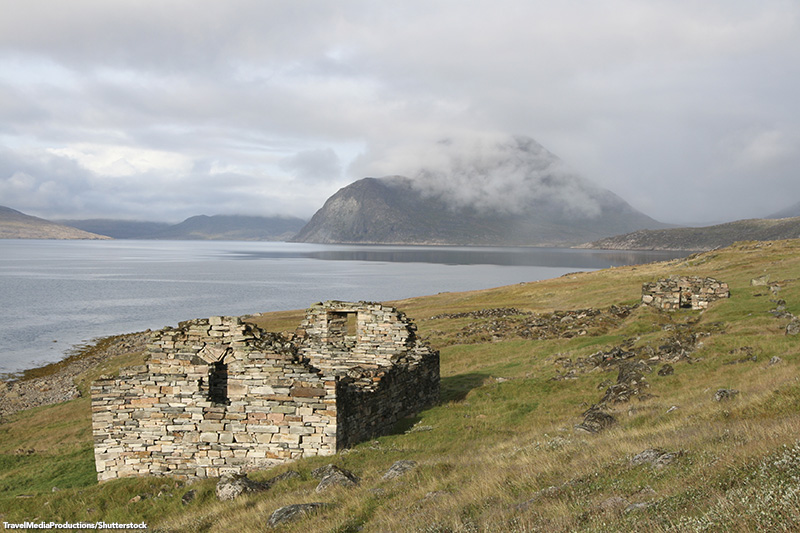
In April 2023, scientists from Harvard University and the University of Pennsylvania proposed a new theory for why the Vikings abandoned Greenland in the fifteenth century. The Vikings’ disappearance has puzzled scientists, historians, and archaeologists. The new research, which was published in a scientific journal, shows that sea-level rise and flooding may have contributed to the Vikings’ departure. Here, btw takes a closer look.
Historical Origins: The Vikings and Greenland
The Vikings, also called Norsemen, were seafaring warriors who came from the region known as Scandinavia. Modern Scandinavian countries include Denmark, Norway, and Sweden. From the ninth to the eleventh centuries, Vikings explored, raided, and colonized parts of Europe. In 982 CE, Erik the Red, a Viking explorer, became the first European to discover Greenland. Two years later, he returned and established two communities in Greenland: the Eastern Settlement and the Western Settlement. Despite Greenland’s harsh arctic climate, the Vikings built farms, raised sheep, and traded walrus tusks with Europe. Five hundred years after their arrival, in the mid-1400s, the Vikings abandoned their settlements and vanished from Greenland permanently.

Previous Theories and New Findings
Scholars previously proposed economic problems, drought, the plague, and temperature change as reasons for the Vikings’ departure. This recent study suggests that the rising sea-level theory, combined with these other factors, forced the Vikings out. The researchers used geological and climate records to build a computer model. The modeled data suggests that Vikings experienced a major loss of land due to rising seas. The findings show that water around the Eastern settlement may have risen by more than 10 feet during the four centuries of Norse residence. Calculations indicate that 79 square miles of land would have been flooded during the settlement period. Approximately 75 percent of Viking farms were within 3,000 feet of an area of flooding.
Why Did Sea Levels Rise Around Greenland?
The study’s lead author, Marisa Borreggine, who is a Harvard doctoral student, said that one reason for sea-level rise around Viking settlements was the Little Ice Age. The Little Ice Age began around 1250 CE and was a cooling period in the North Atlantic region. During the Little Ice Age, temperatures decreased quickly. With the cooling temperatures, Greenland’s southern ice sheet grew larger. According to co-author and geoscientist Richard Alley, while it was thought that cooler temperatures would have lowered the seas, the opposite happened. Alley describes this process using an example of an air mattress. When a person sits in one spot, the mattress sinks and bulges in other areas. In Greenland, the added ice on the surface caused water levels to rise near shore as heavier layers of floating ice pushed the water.
Impacts Upon the Vikings
The study also offers clues for how the changing landscape impacted the Vikings’ way of life. Flooding caused coastal erosion of fertile lands. With a decrease in fertile lands, farmers were unable to grow as many crops. Erosion also meant that sheep and goats had less areas for grazing. In addition, scientists uncovered and examined human bones from churchyards and animal bones from trash piles. Their analysis showed that Viking diets had changed. As rising seas and flooding increased, diets switched from land-based food from sheep and cattle to sea-based foods from fish and seals. While the Vikings tried to adapt to what they ate, ultimately the flooding and rising sea-levels forced them to leave their settlements.
